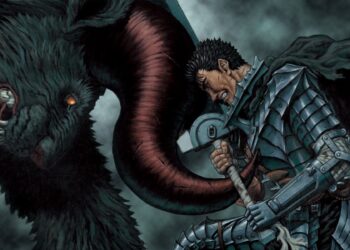Why is Metal Gear Solid 3 Still hailed as a Masterpiece? A Deep Dive into Snake Eater’s Enduring Appeal
In the vast world of video games, some titles stand out. They become legendary. Metal Gear Solid 3: Snake Eater, or MGS3, is one of these titles. Its lasting charm still captivates players and critics. What makes this game special in Hideo Kojima’s series?
Let’s take a close look at MGS3’s brilliance. We will explore its rich narrative, innovative gameplay, memorable characters, and lasting legacy. Join us as we dissect Operation Snake Eater and reveal the secrets behind its timeless status.
General Acclaim and Ranking: Is MGS3 the Pinnacle of Metal Gear?
When you ask fans about the best Metal Gear game, expect debate. Still, Metal Gear Solid 3 is often a favorite. It consistently ranks high on lists and earns widespread acclaim. Many view it as not just the best Metal Gear title, but among the finest games ever made. MGS3 showcased the PlayStation 2’s capabilities from the outset.
This rivalry brings us to an important question: is MGS2: Sons of Liberty better than MGS3? This debate has split fans for years. MGS2 is celebrated for its complex themes and narrative. Yet, MGS3 often surpasses it. MGS3 presents a more cohesive narrative and refined gameplay. While MGS2 broke new ground, MGS3 honed the Metal Gear formula.
For those unaware, the question arises: is MGS3 worth playing today? Absolutely. Released in 2004, MGS3 remains engaging and playable. Its timeless design holds up well against modern titles. The blend of stealth, survival, and strategic combat offers a unique experience not easily replicated by newer games.
Of course, we must consider time’s effects. Has MGS3 aged gracefully? In gameplay and core mechanics, yes. However, viewing it with a modern perspective is crucial. Some interactions and themes may not resonate well today without adjustments. This acknowledgment does not diminish its brilliance but reflects changing social contexts.
Despite these factors, MGS3 is a classic. It represents a powerful example of storytelling and gameplay unity. It pushed boundaries in its era and continues resonating with players today. Its status as a classic is well-deserved, even when viewed through a contemporary lens.
Story and Narrative: A James Bond-esque Prequel Masterpiece
Many claim the story of MGS3 is the pinnacle of the series and even in gaming overall. Each Metal Gear game has a unique narrative, but MGS3 balances complexity, depth, and cinematic flair. It’s a spy thriller that captivates from opening credits to the emotional finale.
The influence of James Bond on Hideo Kojima is clear in MGS3. The opening sequence feels like a classic Bond film. It features stylish visuals, evocative music, and hints at deeper themes. This atmosphere hooks players from the start, setting the stage for the unfolding adventure.
MGS3 is not just a game; it’s a prequel that enriches the Metal Gear saga. It is the fifth game directed by Hideo Kojima but tells the origin story of Big Boss. Set in the Cold War of 1964, it reveals how he became the iconic figure known to fans. This prequel status creates context for future entries.
The themes of the story are layered, exploring loyalty, betrayal, morals, and war’s costs. Like Bond films, MGS3 delves into espionage and political maneuvering. Yet, it goes further into the personal sacrifices faced by its characters. The narrative challenges players with complex questions about national identity and personal beliefs. These themes resonate on both grand scales and intimate levels.
MGS3’s narrative depth is notable. It is not merely a sequence of missions but a cohesive tale with developed characters and emotional moments. The blend of action, stealth, and cinematic storytelling creates a thrilling experience. Kojima’s narrative skills ensure that MGS3’s story is still discussed years later, solidifying its place in gaming history.
Gameplay and Difficulty: Survival, Stealth, and Grueling Boss Battles
Metal Gear Solid games are famous for their challenging gameplay. MGS3 is no different and ranks among the hardest in the series, especially for those seeking mastery. Compared to other entries, MGS3 uniquely combines stealth mechanics, survival elements, and tough combat scenarios that contribute to its difficulty.
Players aiming for 100% completion face formidable challenges in MGS3. It’s not simply about winning; it’s about mastering intricate systems. MGS2: Sons of Liberty also presents challenges but MGS3’s survival aspects elevate its difficulty. Achieving 100% in MGS3 showcases true dedication and skill.
The boss battles in MGS3 are legendary, regarded as some of the most unique confrontations in gaming. Each boss offers distinct challenges in appearance and strategy required to defeat them. Asking about the hardest boss in MGS3 leads to varied opinions based on each player’s experience.
Some bosses, like The End, emphasize strategy over brute force. This elderly sniper encounter requires patience. It’s a tense game of stalking across vast terrains. In contrast, The Pain uses hornets creatively, demanding quick reflexes and planning. The Fury unleashes fiery attacks that test players’ agility and timing. Volgin’s electric powers challenge spatial awareness. Ocelot’s close-quarters combat requires mastering his techniques. The Boss represents the emotional climax of the game, demanding everything learned in combat and strategy. Even The Fear and The Shagohod present significant challenges requiring thoughtful execution.
Adding complexity, MGS3 allows for no-kill runs through the entire game. This goal heightens the challenge further.
MGS3 presents a significant challenge. Players depend on non-lethal takedowns and creative problem-solving. In previous Metal Gear games, such as MGS1, mandatory kills disrupt this approach. MGS3 allows for a more favorable accent on non-lethal gameplay, enhancing replayability and creative exploration.
MGS3 includes survival elements that enhance gameplay. Weapon weight affects Snake’s stamina. Carrying a heavy arsenal leads to stamina depletion and slowed movement. Players must choose their weapons wisely. Food spoilage adds realism and challenge too. Keeping food items too long results in spoilage, which reduces effectiveness. Spoiled food can harm players, urging them to consume strategically. Visual cues indicate spoilage with buzzing flies in the survival viewer.
Characters: Ages, Backstories, and Motivations Unveiled
MGS3 features rich characters with backstories that drive the narrative. Their complex relationships and motivations elevate the plot.
Naked Snake is 29 in MGS3, set in 1964. His youth as a rising operative contrasts sharply with the later Big Boss. This marks his journey of transformation.
Revolver Ocelot, depicted as about 20, already exhibits great skill. His young age foreshadows his evolution into a cunning figure in future games. Observing his origins is fascinating.
The Boss, central to MGS3’s story, has a complex background. Her age is hinted through timelines. If Big Boss was in his late 50s in 1972, The Boss would be in her late 40s during MGS3’s events. This positions her as a figure of vast experience.
The Boss’s motivations drive the narrative. Far from simple defection, they’re rooted in tragedy. Her mission for the CIA was to retrieve the Philosophers’ Legacy. Her seemingly treasonous act aimed to infiltrate Volgin’s camp. Recognizing this complex plot clarifies The Boss’s character and sacrifice.
Content and Completion: Hours of Gameplay and Hidden Treasures
Players may wonder how long MGS3 takes to complete. Depending on playstyle, playtime varies. A focus on the main story lasts around 16 hours. This offers a satisfying narrative arc. For 100% completion, players require about 28 and a half hours. Completionists explore thoroughly, mastering gameplay mechanics and finding all secrets.
MGS3 includes hidden content rewarding exploration. A rare collectible, the Tsuchinoko, adds to the allure. Capturing it unlocks a trophy and special ranking, enhancing replay value.
The Kerotan Frogs are another iconic collectible, totaling 64 scattered throughout the game. Shooting all unlocks the Stealth Camouflage. This offers near-invisibility and rewards sharp shooting skills. These collectibles enrich MGS3’s depth and encourage exploration.
Technical Aspects: The Longest Cutscene and PS2 Prowess
MGS3 pushed the PS2 to its limits. One standout feature is the longest cutscene, lasting 24 minutes. This cinematic offers visual beauty and deep emotion, delivering impactful narrative closure. Such length signifies the game’s dedication to storytelling.
Related Games and Series: Inspirations and Comparisons
MGS3 exists within a larger context. It draws inspiration from other media and contributes to the Metal Gear universe. Fans often compare it to other Metal Gear Solid games. Debates about which game reigns supreme are common, each with unique strengths.
MGS4, Peace Walker, and MGSV are often compared to MGS3. Each version offers different gameplay and narratives within the franchise’s framework.
Moreover, MGS3 reflects influences outside its series. The James Bond connection shines through opening credits and themes. Kojima’s admiration for anime also surfaces. Notably, Neon Genesis Evangelion inspired some surreal elements, though less apparent in MGS3 specifically.
Remake: Reimagining a Classic for a New Generation
The acclaim for MGS3 led to a remake announcement. Konami chose to remake Snake Eater due to its origin story significance. MGS3 is not merely a prequel; it tells Big Boss’s origin, a key figure in the franchise. This remake lets new gamers experience this narrative while using modern technology for enhancements.
Metal Gear Solid 3: Snake Eater stands as a cultural icon. It combines exceptional game design, storytelling, and cinematic qualities. Its appeal lies in its blend of narrative depth, challenging gameplay, and remarkable characters. It fosters repeated playthroughs and strategic thinking.
MGS3 remains essential for seasoned players or newcomers. Its legacy highlights video games as an art form. The title’s masterpiece status stems not from mere nostalgia but from its remarkable quality and lasting impact on gaming.










